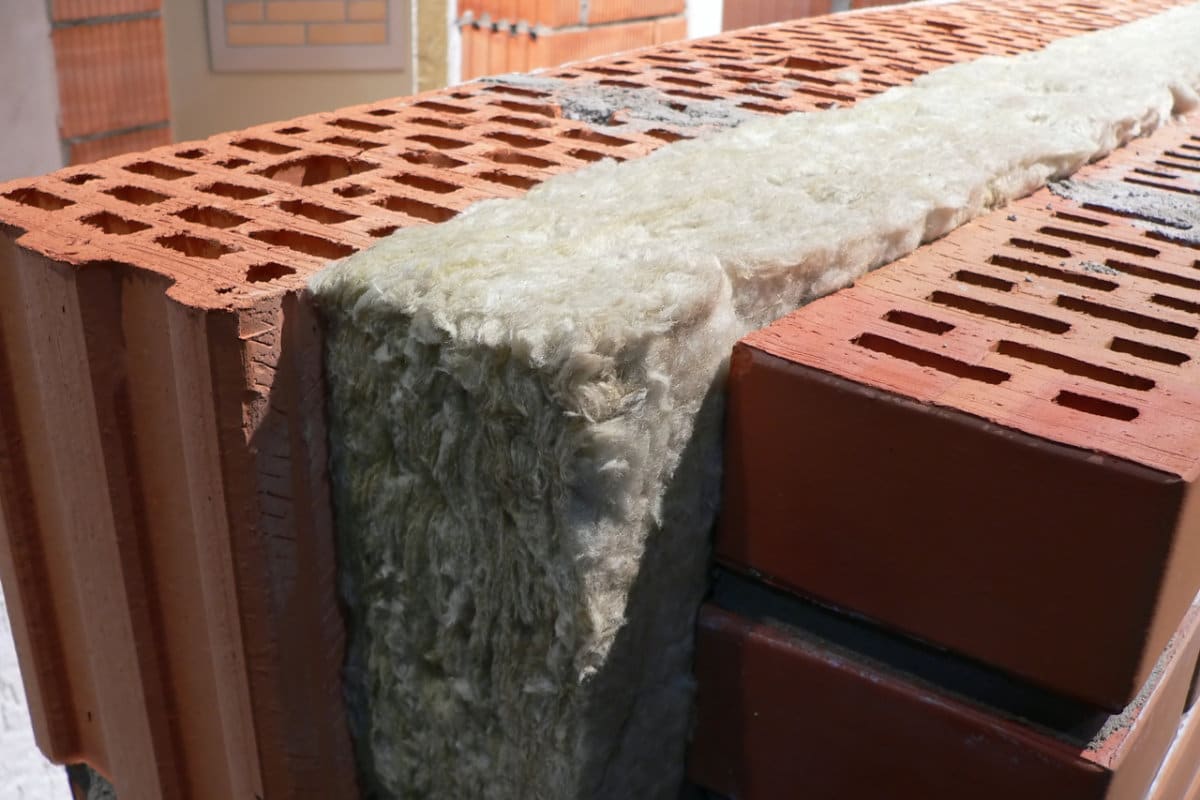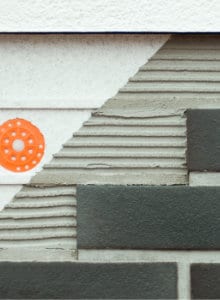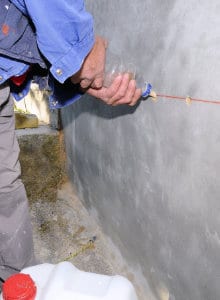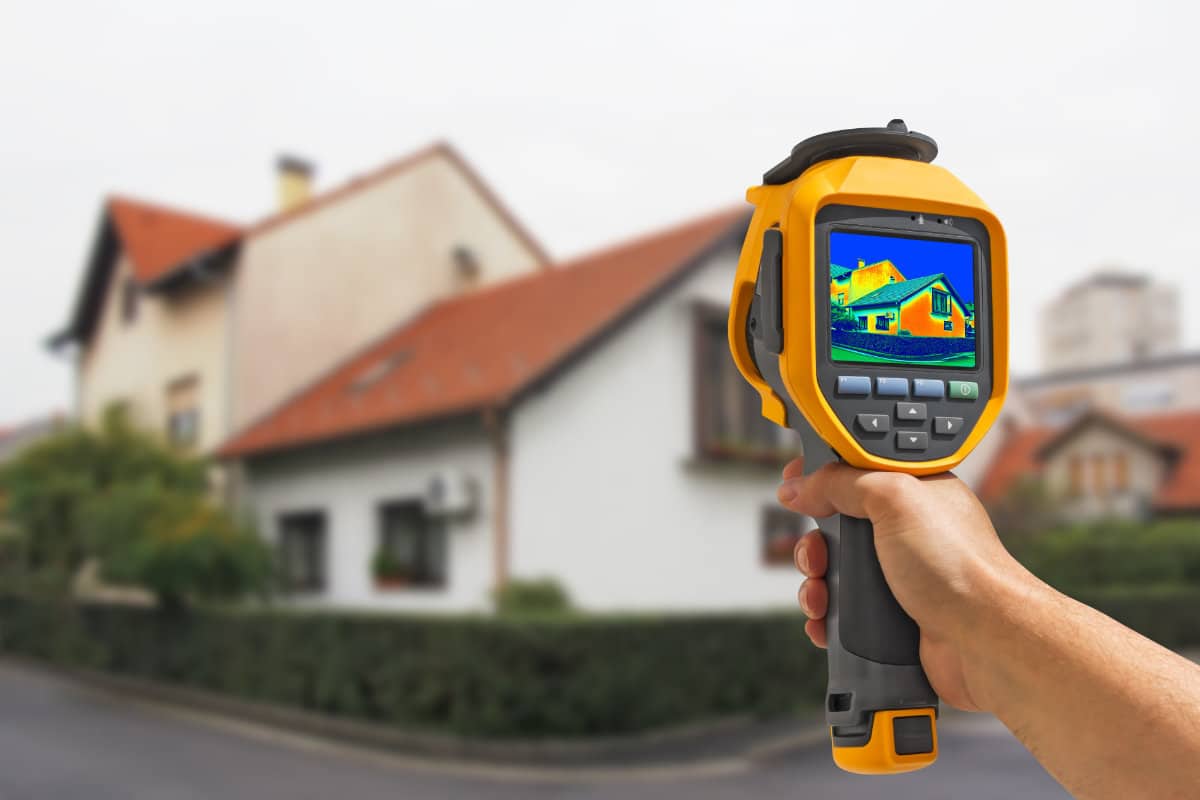Cavity wall insulation removal: advantages and working method
Especially in older houses, the condition of cavity wall insulation is often inadequate or the type of insulation material appears to be severely outdated. In order to avoid damp problems and energy loss, it might be a good idea to remove the old insulation and to have it replaced by modern insulation materials. On this page, you can read more on cavity wall insulation removal.
Why remove old cavity wall insulation?
There are two important reasons why it could be useful to remove and replace aged cavity wall insulation:

1. Modern insulation materials perform much better
At the end of the seventies and the beginning of the eighties, one has started to insulate cavity walls on a large scale. One used UF-foam, synthetic beads and rock wool, which were considered top products at the time. From a thermal point of view, they performed quite well.
Nowadays, more than thirty years have passed. New insulation materials with higher insulation values have been developed; they perform much better at all levels. Conclusion: you can save more energy with these modern materials.
2. The insulation is weathered or has fallen into the cavity
Even insulation materials cannot stand the test of time. This especially holds true for UF-foam (not to be confused with polyurethane foam), which was often applied in the past. As time goes by, this material can start to tear or pulverise. Consequently, the material loses its insulation value and thermal bridges can occur.
Another frequent problem is collapsed cavity wall insulation. In this case, the insulation material has sunk into the cavity over the years. This implies that some places in the facade are no longer filled with insulation, which may lead to several damp problems. Moreover, collapsed insulation has a negative impact on the insulating capacity.
Types of outdated insulation materials
The following insulation materials were especially popular during the eighties. Today, improved versions are available:

– Urea formaldehyde foam (UF-foam). These days, one uses the strongly improved PUR foam.
– Glued EPS beads (white styrofoam balls). Today, grey HR++ EPS beads are used as they insulate much better.
– Mineral rock wool flakes. These are being replaced by modern HR++ glass wool (for example Supafil) as much as possible. This material insulates better than rock wool and is easier to apply in a homogeneous way. Moreover, the glass wool will stay in place neatly (when applied correctly).
Damp problems due to outdated cavity wall insulation

If the insulation material does not stay in place after the application, thermal bridges will appear in the facade. This problem especially occurs in the case of mineral blow-in insulation (outdated quality). These flakes will fall down due to gravity. This can also happen with UF-foam when it is torn or pulverised over time.
This is a very undesirable situation since thermal bridges can lead to damp- and mould stains on the interior wall. These stains arise because damp air in the house tends to condense on places where the wall is cold. These are, in particular, places where the cavity wall insulation is interrupted.
Cavity wall insulation removal: working method
How the old insulation material should be removed, depends on the type of insulation material. Usually, one removes a couple of bricks at the bottom of the facade. Next, holes are drilled in the wall on strategic positions. By means of an extraction system, one sucks the old insulation material out of the wall. It is collected in so-called bigbags. When the cavity is completely empty, the facade bricks are put back in place and the cavity can be filled again.
Is it also possible to repair cavity wall insulation?
Yes, in some situations it is possible to repair the insulation material locally or to supplement it. However, this completely depends on the type of insulation material that is used. Often, the best option is to remove the cavity wall insulation and to replace it by, for example, high-efficiency blow-in insulation (wool). An accurate inspection of the cavity is required in order to determine the best option.
Do you want to receive free and non-binding quotes for cavity wall insulation? On our quote page, you can request customised quotes from experienced and recognised insulation experts. Click here to receive quotes and compare prices.
Cavity wall investigation
In order to determine the condition of the insulation material, one can use a thermal camera and an endoscope. A thermal camera can visualise temperature differences in the exterior walls. In this way, it is possible to get a clear image of the insulation and the places where it is disrupted.
By means of an endoscope, one can take a look in the cavity itself and determine the type of insulation material. In some cases, cavity wall insulation removal won’t be required; it is sufficient to locally supplement the insulation with new material.

Removing UF foam from the cavity
Removing insulation foams like UF foam and PUR is harder than removing loose insulation, but it is definitely not impossible. There are special techniques to pulverize the old insulation material with an abrasive. Afterwards, the material can be sucked out of the cavity.
Besides, it is not always required to remove the UF foam completely. In some cases, it will do to ‘repair’ the insulation locally. This means that the material is removed partially and the cavity is filled again with insulation foam. This solution is much cheaper than a complete cavity wall insulation removal.
Which cavity wall insulation material to choose?
Nowadays, there are very good types of mineral glass wool with a high insulation value. As this material is quite cheap, it is often applied. However, it depends on the condition and cavity width whether fibreglass is the appropriate material. In some cases, it is better to use EPS beads or polyurethane foam. As a thorough inspection of the cavity is required, you can discuss this issue with the contractor.
